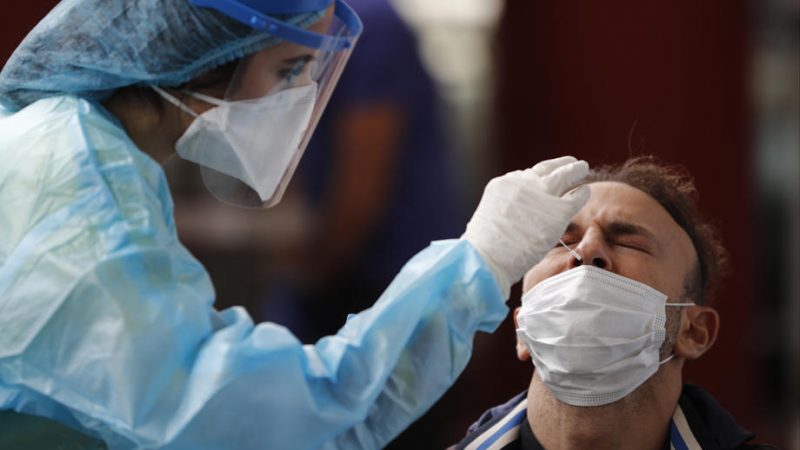An international team of scientists has identified a new biomarker that could predict the severity of coronavirus disease from nasopharyngeal swab.
Biology
Scientists from the Max Planck Institute for Heart and Lung Research, Justus Liebig University of Giessen in Germany, and the Champalimaud Research Center for the Unknown in Portugal, the University of Queensland in Australia and the University of Copenhagen in Denmark have identified a biomarker that they say indicates to the level of “fitness” of lung cells and is able to predict the severity of coronavirus disease. The results are published in the EMBO Molecular Medicine journal.
Judging by the way the world was covered by the fourth wave of Covid-19 and the record increase in the incidence, the coronavirus will remain a public health problem for a long time. To tackle a pandemic, it is important to identify biological clues that can simplify prioritization, allocate resources appropriately and help patients at risk in time. It is known that old age, the presence of chronic diseases – such as diabetes, obesity and heart problems – are associated with the severe course of Covid-19, but such factors usually have limited predictive value.
Previously, scientists suggested paying attention to biomarkers that reflect the strength of the immune response to infection: for example, C-reactive protein and the ratio of neutrophils to lymphocytes. However, the problem is that such indicators appear after infection, and their benefit for treatment depends on whether it is possible to take a blood test and examine it at an early stage. However, in an epidemic, this is not always possible. Therefore, the ideal option would be to find biomarkers in samples from the nasopharynx, because they are primarily taken from patients with suspected Covid-19.
The authors of the new study suggested that a marker of lung cell fitness – hFwe-Lose – can accurately predict hospitalization or death of people of different ages infected with SARS-CoV-2. To confirm their findings, the research team first performed a postmortem analysis of lung tissue from patients who had died from Covid-19. They then conducted an observational study taking nasal samples from people between the ages of one and 96 at an early stage of the disease. Participants without a history of coronavirus were also included in the analysis.
As a result, it turned out that in patients with Covid-19 and acute lung injury, hFwe-Lose was especially expressed in the lower respiratory tract and was localized in the areas of affected cells. In addition, hFwe-Lose levels were increased in the elderly, as well as in people with diabetes, COPD, obesity (body mass index over 30), cardiomyopathy, heart failure, hypertension, chronic kidney disease, compared with healthy subjects. A statistical model, adjusted for age and sex, showed that hypertension, diabetes and chronic kidney disease have the greatest impact on hFwe-Lose.
“In the absence of SARS-CoV-2, hFwe-Lose expression was increased in the airways of the elderly and people with one or more comorbidities. Importantly, hFwe-Lose was not elevated in all of these groups: patient-to-patient differences may reflect duration of illness, lifestyle, and other factors. Nevertheless, we believe that at the individual level, an increased level of hFwe-Lose indicates a large number of “maladjusted” cells in the airways, ”the scientists explained.
Also, this biomarker prevailed in nasal swabs of patients who were hospitalized within 14 days of disease progression, required intensive care or tracheal intubation, had a respiratory rate of more than 30 breaths per minute or a blood oxygenation level of less than 94%, as well as those who died 30 days after the onset of the disease.
While it is not clear why airway expression of hFwe-Lose is associated with the severity of Covid-19, researchers have shown that this biomarker can be easily detected in nasopharyngeal samples. In patients with an early phase of the disease, it allowed to accurately predict subsequent hospitalization or death with an accuracy of at least 87.8%.












